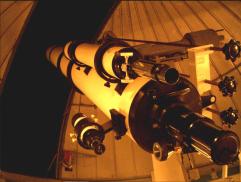Overview of the Zentrum für Astronomie und Astrophysik

- ©Beate Patzer (ZAA)
The research of the group of Prof. Dr. D. Breitschwerdt at the Zentrum für Astronomie und Astrophysik focuses on analytical and numerical modelling of star forming galaxies, with particular emphasis on the evolution of the interstellar and intergalactic medium. A further field of research is high energy astrophysics in general, including the acceleration and propagation of high energy particles and the interpretation of observations. In addition the effect of supernova explosions, in particular in the vicinity of the solar system, is investigated by simulating numerically the ejection of radioactive isotopes like 60Fe and comparing them to laboratory measurements, which are performed within the framework of nuclear astrophysics in the group.
Prof. Jörg Büchner investigates the explosive energy release by magnetic reconnection and turbulence in magnetic storms, the resulting plasma heating, particle acceleration and structure formation – by means of kinetic und magneto-hydrodynamic numerical simulations.
Additional fields of research are the numerical simulation of planetary interiors and the existence of life on other planets, specifically on Mars.
The group led by Prof. Dr. W.-C. Müller investigates the nonlinear dynamics of physical phenomena, such as plasma turbulence and magnetic reconnection, which are of fundamental importance in astro- and plasmaphysics.
Focus of the work of Prof. Dr. R. Wolf lies on the investigation of high-temperature plasma at the stellarator experiment Wendelstein 7-X in Greifswald. First measurement campaigns are expected in 2015. For the preparation of these experiments, techniques for heating the plasma and measurement methods for a large variety of plasma parameters are developed.
The research focus of the group led by Prof. Schulze-Makuch is astrobiology and planetary habitability, particularly life in extreme environments. Examples are the Atacama Desert as part of the Dry Limit of Life Project and a natural liquid asphalt lake in Trinidad. Dirk Schulze-Makuch is also president of the German Astrobiological Society and active in many other astrobiology-relevant projects.
The research interests of Prof. Dr. Rauer and her group range from the observation and theoretical modelling of extrasolar planetary systems to the physics of comets within our solar system.
An overview of the research activities of the former group of Prof. Dr. E. Sedlmayr can be found here.

